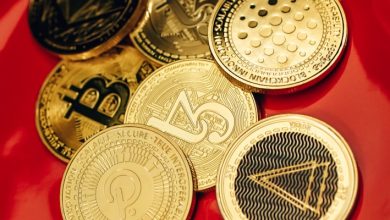How Token Dynamics Are Shaping the NFT Market

- Understanding the role of tokens in the NFT market
- Exploring the impact of token dynamics on NFT pricing
- The importance of tokenomics in NFT projects
- Token utility and its influence on NFT adoption
- Token distribution strategies in the NFT space
- Challenges and opportunities in designing token dynamics for NFTs
Understanding the role of tokens in the NFT market
Tokens play a crucial role in the NFT market, acting as unique digital assets that represent ownership of a specific item or piece of content. These tokens are typically built on blockchain technology, which ensures their authenticity and scarcity. By leveraging tokens, creators can tokenize their work and sell it as an NFT, allowing buyers to own a verifiable and tradable digital asset.
In the NFT market, tokens serve as a vehicle for transferring ownership of digital assets securely and transparently. Each token is assigned a unique identifier that distinguishes it from other tokens, making it easy to track ownership and provenance. This feature is particularly valuable in the world of digital art, where authenticity and provenance are crucial for establishing the value of a piece.
Moreover, tokens in the NFT market can also be used to embed additional information or utility into digital assets. For example, creators can attach unlockable content, royalties, or access to special events to their tokens, adding value to the NFT beyond its intrinsic worth. This tokenization process enables creators to monetize their work more effectively and establish direct relationships with their audience.
Overall, understanding the role of tokens in the NFT market is essential for both creators and buyers. Tokens not only provide a secure and transparent way to transfer ownership of digital assets but also open up new possibilities for adding value and utility to NFTs. As the NFT market continues to evolve, tokens will remain a fundamental building block of this digital ecosystem, shaping the dynamics of ownership, provenance, and value creation.
Exploring the impact of token dynamics on NFT pricing
The pricing of non-fungible tokens (NFTs) is heavily influenced by the token dynamics surrounding them. Token dynamics refer to the various factors that affect the value and demand of a particular token within the NFT market. Understanding these dynamics is crucial for both buyers and sellers to make informed decisions.
One key aspect of token dynamics is the scarcity of a token. NFTs that are more scarce tend to have a higher price due to the limited supply available. This scarcity can be created through various means, such as limiting the number of tokens minted or tying the token to a specific real-world asset.
Another important factor is the utility of the token. Tokens that have a clear use case or provide additional benefits to the holder are often more valuable. This utility can come in the form of access to exclusive content, voting rights in a decentralized organization, or the ability to participate in special events.
The community surrounding a token also plays a significant role in determining its price. A strong and engaged community can create hype and demand for a particular NFT, driving up its value. On the other hand, a lack of community support can lead to a decrease in price as interest wanes.
Additionally, the interoperability of a token can impact its pricing. Tokens that can be easily integrated with other platforms or used in different ecosystems tend to have a higher value. This interoperability allows for greater flexibility and utility, making the token more attractive to potential buyers.
Overall, token dynamics are a complex and multifaceted aspect of the NFT market that can have a significant impact on pricing. By understanding these dynamics and how they influence the value of a token, participants in the NFT market can make more informed decisions when buying or selling tokens.
The importance of tokenomics in NFT projects
Tokenomics plays a crucial role in the success of NFT projects. It refers to the design and implementation of a token economy within a project, which includes factors such as token distribution, utility, and governance. The tokenomics of an NFT project can significantly impact its value and sustainability in the market.
One of the key aspects of tokenomics in NFT projects is the distribution of tokens. How tokens are distributed among stakeholders, creators, and users can influence the overall dynamics of the project. A fair and transparent token distribution mechanism can help build trust and attract more participants to the ecosystem.
Another important factor in tokenomics is the utility of the token. The token should have clear and valuable use cases within the project, such as access to exclusive content, voting rights, or rewards. This utility can drive demand for the token and increase its value over time.
Additionally, governance mechanisms are essential for ensuring the sustainability and longevity of an NFT project. Token holders should have a say in decision-making processes, such as upgrades, changes to the protocol, or community initiatives. A well-designed governance system can foster a sense of ownership and participation among token holders.
In conclusion, tokenomics is a critical component of NFT projects that can shape their success in the market. By carefully designing token distribution, utility, and governance mechanisms, project teams can create a robust ecosystem that attracts users, creators, and investors alike.
Token utility and its influence on NFT adoption
Token utility plays a crucial role in driving the adoption of non-fungible tokens (NFTs) in the market. The unique functionalities and benefits offered by tokens can significantly influence how NFTs are perceived and used by individuals and businesses alike.
One of the key factors that determine the success of NFTs is their utility within a specific ecosystem. Tokens with diverse use cases, such as governance rights, access to exclusive content, or rewards for participation, can enhance the overall value proposition of NFTs. By providing tangible benefits to token holders, issuers can attract a wider audience and encourage active engagement with their NFTs.
Moreover, token utility can also create network effects that drive the growth of NFT ecosystems. As more users acquire and interact with tokens, the value of NFTs can increase, leading to a positive feedback loop that attracts even more participants. This virtuous cycle of adoption and value creation can help NFTs gain mainstream acceptance and establish themselves as a valuable asset class.
In addition to driving adoption, token utility can also enhance the user experience of NFT platforms. By integrating tokens into the platform’s features and functionality, users can enjoy a seamless and rewarding experience when buying, selling, or interacting with NFTs. This can help increase user retention and loyalty, leading to a more vibrant and sustainable NFT market.
Overall, token utility plays a critical role in shaping the dynamics of the NFT market. By offering unique functionalities and benefits, tokens can drive adoption, create network effects, and enhance the user experience of NFT platforms. As the NFT ecosystem continues to evolve, token utility will remain a key factor in determining the success and longevity of NFT projects.
Token distribution strategies in the NFT space
Token distribution strategies in the NFT space play a crucial role in shaping the market dynamics. There are various approaches that projects can take when it comes to distributing their tokens. One common strategy is to allocate a certain percentage of tokens to the team and advisors, incentivizing them to contribute to the project’s success. Another approach is to distribute tokens through a public sale, allowing anyone to participate and acquire tokens. Additionally, some projects opt for airdrops, where tokens are distributed for free to existing token holders or community members as a way to increase adoption and engagement.
Moreover, token distribution strategies can also impact the overall supply and demand dynamics of the NFT market. Projects that distribute a large number of tokens to a small group of individuals may face issues with centralization and price manipulation. On the other hand, projects that distribute tokens more evenly among a larger community may benefit from a more decentralized and stable market.
It is essential for projects to carefully consider their token distribution strategies to ensure a fair and sustainable ecosystem. By striking the right balance between incentivizing stakeholders and maintaining a healthy market, projects can create a thriving NFT ecosystem that benefits all participants. Ultimately, token distribution strategies are a critical component in shaping the future of the NFT market and driving long-term success for projects in this space.
Challenges and opportunities in designing token dynamics for NFTs
When it comes to designing token dynamics for NFTs, there are both challenges and opportunities that creators and developers must consider. One of the main challenges is ensuring that the tokenomics of the NFT are well-balanced and sustainable over time. This means finding the right balance between scarcity and utility to ensure that the value of the NFT remains stable and desirable for collectors.
Another challenge is designing token dynamics that incentivize user engagement and participation. This can be achieved through mechanisms such as staking, voting rights, or rewards for holding onto the NFT. By creating opportunities for users to interact with the NFT in meaningful ways, creators can increase the overall value and longevity of the token.
On the flip side, there are also many opportunities to explore when designing token dynamics for NFTs. For example, creators can use smart contracts to automate certain aspects of the NFT, such as royalties for secondary sales or unlocking additional content over time. These features can help to increase the perceived value of the NFT and attract more collectors.
Additionally, by incorporating social elements into the token dynamics, such as allowing users to collaborate on projects or showcase their collections to a wider audience, creators can foster a sense of community around the NFT. This not only increases the overall engagement with the token but also creates new opportunities for collaboration and networking within the NFT ecosystem.



